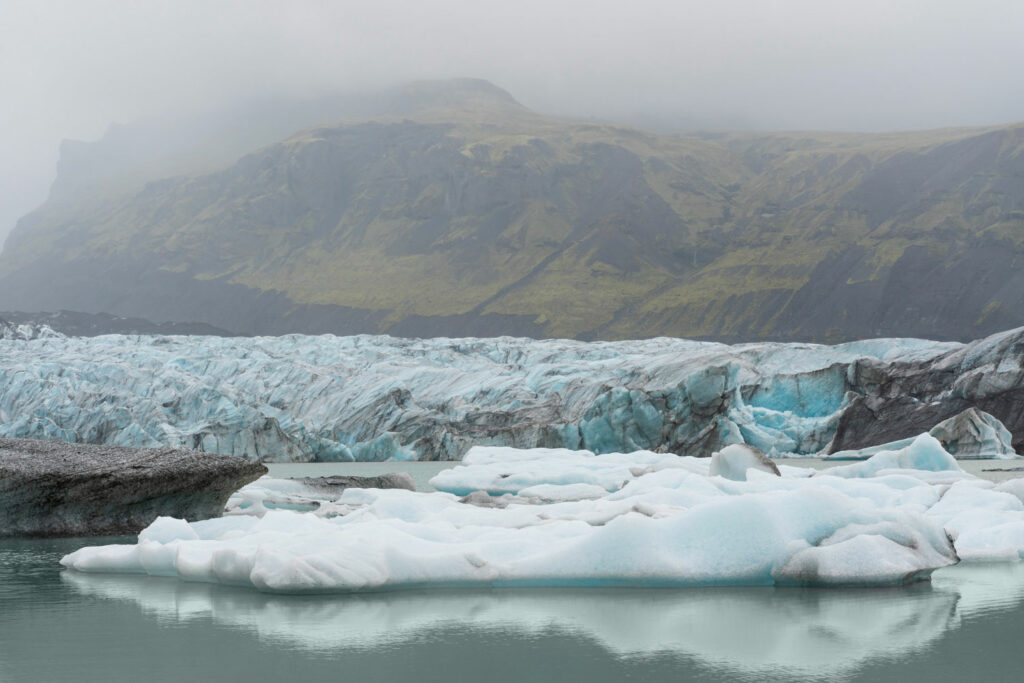Around 34 million years ago, our planet experienced a significant shift in climate, transitioning from a greenhouse world to an icehouse world. This transformation led to the formation of the Antarctic ice sheet, but crucial details about the timing and location of these changes have long been unknown due to limited data.
Through collaborative research involving multiple institutions, including the Alfred Wegener Institute and Helmholtz Centre for Polar and Marine Research, new insights have been gained to fill this knowledge gap. The findings have far-reaching implications for our understanding of past climate changes and their impact on present global climate conditions.
The researchers were able to establish the history of the onset of the icy Antarctic continent for the first time based on a drill core retrieved using the MARUM-MeBo70 seafloor drill rig in an offshore location near the Pine Island and Thwaites glaciers on the Amundsen Sea coast of West Antarctica. Surprisingly, no evidence of ice presence was found in this region during the initial phase of Antarctic glaciation.
According to Dr. Johann Klages, a geologist at the AWI who led the research team, this suggests that the first large-scale, permanent glaciation must have begun somewhere in East Antarctica, as West Antarctica remained ice-free during this initial glacial maximum. At that time, West Antarctica was largely covered by dense broadleaf forests and experienced a cool-temperate climate that prevented the formation of ice.
The AWI paleoclimate modelers combined newly available data with existing data on air and water temperatures and ice occurrence to gain a better understanding of where the first permanent ice formed in Antarctica.
“The simulation has supported the results of the geologists’ unique core,” says Prof Dr Gerrit Lohmann, paleoclimate modeler at the AWI. “This completely changes what we know about the first Antarctic glaciation.”
The study indicates that the coastal regions of Northern Victoria Land in East Antarctica experienced the necessary climatic conditions for permanent ice formation as moist air masses reached the rising Transantarctic Mountains, creating ideal conditions for continuous snow and eventual ice cap formation. Subsequently, the ice sheet rapidly extended into the East Antarctic hinterland. However, it took some time before it reached West Antarctica.
“It wasn’t until about seven million years later that conditions allowed for the advance of an ice sheet to the West Antarctic coast,” explains Hanna Knahl, a paleoclimate modeler at the AWI. “Our results clearly show how cold it had to get before the ice could advance to cover West Antarctica, which, at that time, was already below sea level in many parts.”
The investigations also demonstrate the distinct reactions of the two Antarctic ice sheet regions to external factors and significant climate changes. “Even a slight warming is enough to cause the ice in West Antarctica to melt again – and that’s exactly where we are right now,” adds Johann Klages.
The outcomes of the global research group are crucial for comprehending the drastic climate shift from the greenhouse climate to the current icehouse climate. Additionally, the study offers fresh perspectives that enable climate models to more precisely replicate the impacts of permanently glaciated areas on global climate dynamics, encompassing the interplay between ice, ocean, and atmosphere.
The researchers successfully bridged this knowledge gap by leveraging a unique drill core obtained during the expedition PS104 aboard the research vessel Polarstern in West Antarctica in 2017. The revolutionary MARUM-MeBo70 drill rig, developed at MARUM in Bremen, was employed for the first time in Antarctica. The seabed off the West Antarctic Pine Island and Thwaites glaciers is remarkably tough, previously impeding access to deep sediments using conventional drilling methods. The MARUM-MeBo70’s rotating cutter head enabled drilling to a depth of about 10 meters into the seabed, facilitating sample retrieval.
Funding for the research project, particularly the Polarstern expedition PS104, was provided by the AWI, MARUM, the British Antarctic Survey, and the NERC UK-IODP Programme.
Journal reference:
J. P. Klages et al. Ice sheet–free West Antarctica during peak early Oligocene glaciation. Science, 2024; DOI: 10.1126/science.adj3931
>>> Read full article>>>
Copyright for syndicated content belongs to the linked Source : Tech Explorist – https://www.techexplorist.com/glaciation-antarctic-ice-activated-roughly-34-million-years-ago/85921/#utm_source=rss&utm_medium=rss&utm_campaign=glaciation-antarctic-ice-activated-roughly-34-million-years-ago
